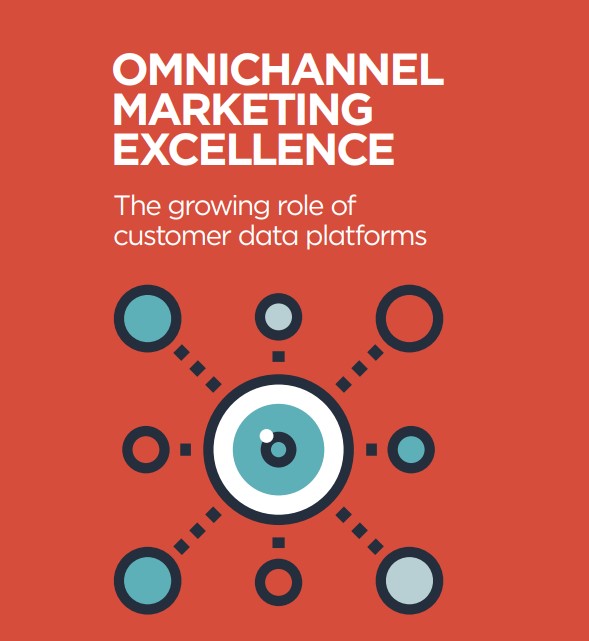Research: Customer data analysis key to omnichannel marketing success and business growth
Companies which collate and analyze customer data, both online and offline, have grown 16% in the last year and are more than twice as likely to significantly exceed business goals and see strong return on investment (32% versus 14%), according to a global survey of 235 organizations with annual revenues of at least $50m.
Modern marketing now relies on integrated data. In fact, Econsultancy’s report found that companies who embed customer journey mapping are twice as likely to exceed business goals as their competitors, with 85% of respondents agreeing it gives them a competitive advantage. It is unsurprising, therefore, that platforms which provide the collation, unification, management, and activation of data are gaining in popularity. A Customer Data Platform (CDP) is an attractive proposition for marketers, as it provides businesses with a Single Customer View (SCV) to analyze and act upon at all of the touchpoints in the customer journey.

The research, carried out by London Research in partnership with CDP vendor BlueVenn, builds on the 2019 Customer Data Excellence report that focuses on the growing role of CDPs in the execution of effective marketing activity to meet business goals. The report finds that Covid-19 has served to increase the importance of CDPs as part of the marketing technology stack, with 78% of companies reporting increased traffic to their digital properties. As a result, there has been a 24% increase (51% to 63%) in the proportion of companies now using a CDP compared to 2019.
Despite the clear link between building a robust understanding of the customer and business success, only 9% of responding companies have engineered a seamless customer experience across online and offline channels in the last 12 months. The most significant contributing factor to omnichannel marketing capabilities being held back is the apparent lack of C-suite involvement with the customer experience (CX); only 17% of organisations have a dedicated CX team and ownership at executive level.
This research, which explores how companies are harnessing customer data to provide better customer experiences, finds that CDP-equipped companies are more than five times as likely to be using advanced customer data analytics to support real-time or time-based triggered messaging and personalization (37% vs. 7% for non-CDP users). What’s more, they are over three times as likely to say they personalize the website/ecommerce store using offline customer variables as well as digital ones (23% vs. 7%).
Geographically, business adoption of customer data analysis is higher in the US than the UK (70% vs. 64%), demonstrating why US brands are significantly more likely to report having a full, cross-channel SCV (25% vs. 16%). The European market is positioned behind the US in its data analysis adoption cycle, but the research shows implementation is growing, with 29% of UK respondents planning to use a CDP, compared with 20% in the US.
Other key findings from the report are:
- Organizations with clear customer data are almost twice as likely to have fully synchronized cross-channel communications that are coordinated over time and tailored to meet consumers’ needs (40% vs. 24% for non-CDP users)
- More than half (56%) of the companies without CDPs are still more channel-focused, which limits their ability to apply insights holistically across their marketing efforts
- Transactional companies (D2C retail companies) are more than twice as likely as their non-transactional counterparts to have a fully customer-first approach, with a dedicated team and executive level responsibility for CX (20% vs. 7%)
- While almost a third (30%) of companies integrate their paid, owned and earned digital channels in a strategic fashion, only around a fifth (21%) of those surveyed synchronize and coordinate both digital and offline activity across a variety of inbound channels in the context of customer acquisition
Commenting on the research findings, Steve Klin, CEO of BlueVenn, said: “When you can activate an SCV across the entire business ecosystem, it ensures that the website caters for past bookings and browsing history, call center agents can have informed conversations, sales assistants can make great recommendations, and marketers can email those same offers and recommendations based on all past interactions. The path to omnichannel maturity is anything but straightforward, however. As this omnichannel maturity report shows, it will be some time before all organizations realize their omnichannel utopia. Companies are definitely getting better at mapping customer journeys, but only 9% are delivering seamless experiences across both their online and offline channels. In large part, this is due to a cultural barrier, highlighted by the fact that only 17% of organizations say they have CX representation at C-level. This failing will continue to obstruct many marketers from realizing their goal of omnichannel excellence, and means that marketing systems and processes remain fragmented and channel-focused.”
This Omnnichannel Marketing Excellence report is based on a global survey of 235 organizations with annual revenues of at least $50m. The survey, carried out in August and September 2020, was publicized through LinkedIn business networks and dedicated survey emails sent out by London Research and its sister company, Digital Doughnut.
Respondents who qualified for the survey were those working client-side for organizations across a range of business sectors. The best-represented countries in the survey were the US (42%) and UK (38%). The first appendix of this report contains further information about the profile of survey respondents, including annual revenues and company sector.
The report is authored by Andrew Campbell, Martech Director, Customer Experience Division, Home Agency, and Linus Gregoriadis, Director, London Research.






